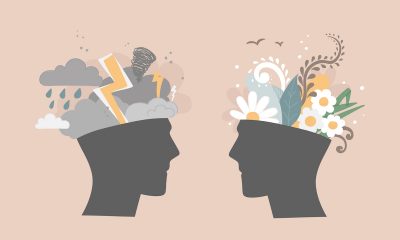Medical cannabis expert Dr Julie Moltke, discusses how by making changes to our lifestyle, we could modulate the endocannabinoid system to make us more resilient to stress.
Danish medical cannabis prescriber, Dr Julie Moltke is a specialist in pain, anxiety and stress, as well as a yoga teacher and mindfulness instructor.
Through her recent investigations into stress and the endocannabinoid system, she found that making several relatively small lifestyle changes could help people cope better with stress and anxiety.
How the endocannabinoid system works
The endocannabinoid system (ECS) was discovered in 1992 when researchers were trying to uncover the receptor mediating the effects of THC, the psychotropic cannabinoid from cannabis, responsible for many of the behavioural, emotional and physiological actions of recreational cannabis in humans.
Since then, the ECS has emerged as one of the most important regulators of general human homeostasis (a stable internal environment). It regulates reward, appetite, mood, memory, immune function, fertility, pain, and neuroprotection, among others. The endocannabinoid receptors (primarily CB1R or CB2R) have been found almost in every organ system in the body.
The density of these receptors is particularly high in parts of the brain involved with fear, memory, and emotional processing – namely the amygdala, hippocampus, prefrontal cortex, and hypothalamus. These brain areas are not only interconnected in the brain, but they are also involved in regulating the physiological stress response and the release of cortisol and adrenaline.
The body of evidence suggesting that the ECS is involved in the regulation of the behavioural aspects of the stress response, such as anxiety, learned fear and stress-coping, is growing and the field of cannabinoid-based medicine is attempting to use this understanding to use medicinal cannabis to treat many mental health issues.
It is well documented that people with higher levels of anandamide (the endogenous molecule of the endocannabinoid receptor CB1R) are more resilient to stress whereas lower levels are associated with several psychopathologies including depression, PTSD and suicide.
How does lifestyle affect the endocannabinoid system?
Running
It has been shown that running can increase circulating levels of anandamide, as well as endorphins. This seems to be partly responsible for the so-called runners high, a feeling of wellbeing and elevated mood, often following moderate-intensity running.
Activation of the endocannabinoid system is also hypothesized to be involved with the reduction of pain perception which tends to accompany running. Further studies into this interesting field have shown that the above applies only for moderate intensity exercise, whereas low and high-intensity workouts do not seem to have the same effects.
Cycling
Moderate intensity cycling seemed to raise anandamide levels in a study conducted on healthy male athletes. Researchers found the same association and concluded that the endocannabinoid system might be responsible for the anti-depressant effects that exercise seems to have.
A similar study was conducted by O’Sullivan and colleagues with nine female volunteers from a local choir. This study did not show elevated levels of anandamide after cycling which indicates there might be some gender differences.
Moderate exercise
This generally seems to increase anandamide levels, but it is worth noting that research suggests that you will get the best effect in improving mood and decreasing anxiety when undertaking a type of exercise that you enjoy]. This might also explain why O’Sullivan and colleagues did not find an increase in anandamide and improved mood (the women were choir singers and not athletes).
Singing
The study mentioned above involving nine females also showed that singing increased circulating levels of anandamide and increased positive mood and emotions. The authors also found that the participants felt less hungry with higher levels of anandamide. This indicates that increasing levels of anandamide by either of the above methods will not only be able to improve mood but might also help decrease hunger and thereby maintain a stable body weight.
The study by O’Sullivan and colleagues also investigated the effects of dancing, though they did not find an increase in levels of anandamide. They suggest that singing when perceived as enjoyable, can help decrease anxiety and improve mood.
Food
Some certain foods and ingredients are shown to be able to interact with the ECS and thereby potentially improve our resilience to stress, as well as improving inflammation and help balance our mental health. These have been named cannabimimetic molecules and can be found in certain vegetables like carrots and fava beans, turmeric, and coffee. Omega-3 and omega-6 fatty acids are precursors of endocannabinoids and a sufficient intake is important to help balance the ECS. They can be obtained either from food-sources or as supplements.
Social interaction
In an animal study, Wei and colleagues found that oxytocin (the social bonding hormone) increases levels of anandamide, which is involved in the regulation of social reward. The researchers suggest this oxytocin-driven anandamide signalling might be defective in autism spectrum disorders.
Read the full report and bibliography here
Find out more about Dr Julie Moltke and her work at www.drjuliemoltke.com/

 News6 months ago
News6 months ago
 Science5 months ago
Science5 months ago
 Industry6 months ago
Industry6 months ago
 News6 months ago
News6 months ago
 News5 months ago
News5 months ago
 Health4 months ago
Health4 months ago
 News5 months ago
News5 months ago
 Health3 months ago
Health3 months ago












